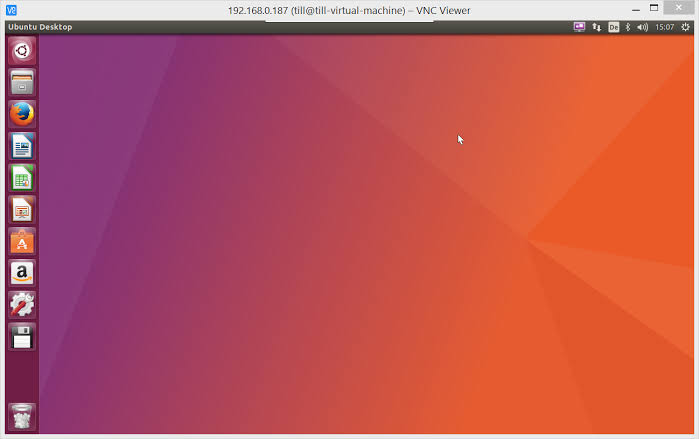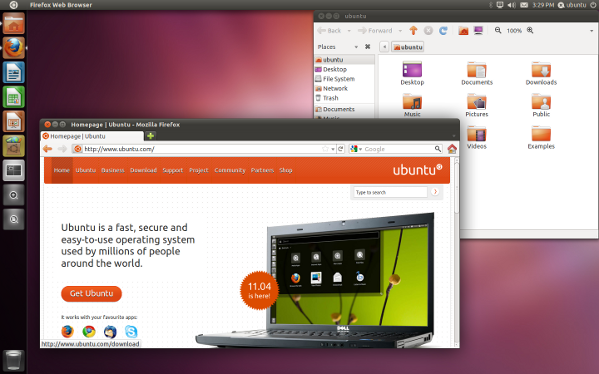
- #UBUNTU 64 BIT VIRTUALMACHINE INSTALL#
- #UBUNTU 64 BIT VIRTUALMACHINE DRIVERS#
- #UBUNTU 64 BIT VIRTUALMACHINE FULL SIZE#
- #UBUNTU 64 BIT VIRTUALMACHINE SOFTWARE#
- #UBUNTU 64 BIT VIRTUALMACHINE ISO#
To add a SATA optical drive, click the CD/DVD icon next to the SATA Controller and click the Leave Empty button in the Optical Disk Selector window. Open the Screen settings from the Display panel and configure the Video Memory value to 128 MB and enable 3D graphics acceleration.ĭelete the IDE Controller from the Storage hardware settings of the virtual computer. In the same panel, view the Processor hardware settings and increase the number of virtual cores according to the processing power of your host computer. View the Motherboard hardware settings in the System panel and disable the Floppy device from the Boot Order devices and configure the Optical device as the first row.
#UBUNTU 64 BIT VIRTUALMACHINE FULL SIZE#
The Pre-allocate Full Size option may be efficient in terms of performance on older generation computers, but since it will fill the disk size unnecessarily, you can allocate the required space from your host disk by using the old feature, Dynamically Allocated, without checking this option.Īfter checking the hardware properties of the guest virtual computer you created in the Summary window, click Finish to close the window.Īfter preparing your Ubuntu virtual computer, click Settings from the tool menu to configure its settings more accurately and increase its usability.Īfter clicking Advanced in the General panel of the virtual machine settings, change the Shared Clipboard and Drag’n’Drop values to Bidirectional to enable file transfer between your host system and your guest machine using Drag and Drop and Copy and Paste features. When you select Fixed Size, the disk space you have specified will be allocated from your host disk while the virtual machine is being prepared. This setting was called Fixed Size in VirtualBox 6.x versions. You can also use the Pre-allocate Full Size feature to preset the capacity of the virtual disk from the disk capacity of your host computer. However, check to Create a virtual hard disk now because you will be installing an Ubuntu from scratch. If there is a guest operating system that you have previously installed in the Hard Disk window, you can add the VDI virtual disk file. A minimum RAM size of 4GB may be sufficient, but if you have 16GB or 32GB memory sizes on your host, you can specify a higher size. But if you want to do a normal installation, you can check the Skip Unattended Installation option and continue.Īssign RAM size to your Ubuntu virtual machine depending on the hardware performance of your host computer. Using the unattended setup feature, you can pre-add the system’s product key and pre-set your user account name and password. In the new version 7.0 of VirtualBox, you can now create more simply and quickly, or make more professional configurations such as product key and user account for systems such as Windows.
#UBUNTU 64 BIT VIRTUALMACHINE ISO#
In the window that opens, select the Ubuntu ISO file you downloaded and add it to the guest machine.
#UBUNTU 64 BIT VIRTUALMACHINE INSTALL#
If you see that your graphics may become blurry or jerky, you can disable 3D transparency effects by right-clicking on the desktop, then select Personlize -> Appearance –> Disable transparency effects.In the Create Virtual Machine window, type the name of the operating system you will install on the virtual machine in the Name field, expand the drop-down menu from the ISO Image section and click Other.

To accomplish this, you can select the Display-icon at the bottom-right of the VirtualBox ( ) -> Virtual Screen 1 –> Resize to 1440×900. It might be handy to increase the resolution if the VirtualBox. For the shared folder, we recommend usning your Downloads folder in Linux for your VirtualBox Downloads. Now run the setup: just double-click the VBoxWindowsAdditions executable file.Īfter the installation, you should be able to set a shared folder, set shared clipboard to bi-directional and set the bi-directional drag-and-drop function. Then you can find the VirtualBox Guest Additions virtual CD drive under the file explorer -> This PC. On the top bar of your virtual machine, click on Devices -> Insert guest additions CD image. Installing the Guest additions add-on is pretty straight-forward, luckily.
#UBUNTU 64 BIT VIRTUALMACHINE SOFTWARE#
To accomplish this, we will have to install the guest additions software of Oracle.

#UBUNTU 64 BIT VIRTUALMACHINE DRIVERS#

If you successfully installed Windows 10, the Windows start screen looks like this.


 0 kommentar(er)
0 kommentar(er)
